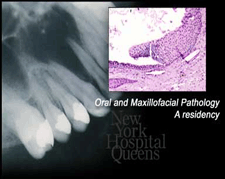المقالات
Fibroma

Most fibromas of the oral cavity are caused by long-term irritation or trauma, such as persistent cheek or lip biting. They consist of increased numbers of normal cells (called hyperplasia) that are fibrous in nature. They can be found anywhere in the mouth, but the most common areas for fibromas to develop are the insides of the cheeks, the corners of the mouth, and the tongue.
Fibromas are most commonly attached to the mouth by either by a wide base of tissue or a stalk-like growth of tissue. They range in size from a few millimeters to several centimeters in diameter. The surface texture is usually smooth, like normal mouth tissue, and may be either very soft or firm to the touch. Fibromas are the most common tumor-like lesions in the mouth. They can form at any age, but are most commonly seen in the 30 to 50 age group. They usually develop slowly, and though they're typically not painful, they can be easily traumatized; this can result in an ulceration. If a fibroma is not removed, it can become quite large, making it even more susceptible to irritation and ulceration.
